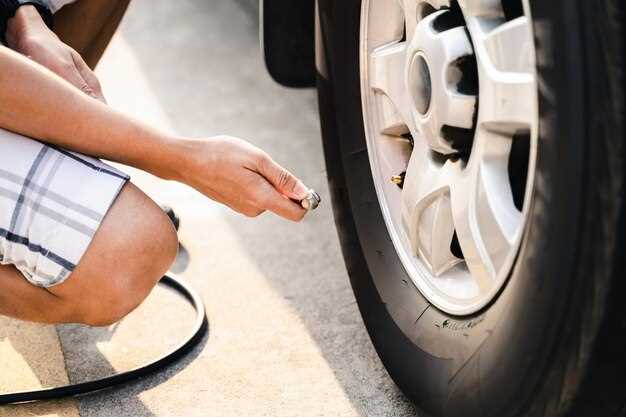
Common causes of uneven tire wear
- Dominique Kaye
- 0
- Posted on

Proper tire maintenance is crucial for ensuring vehicle safety and performance. One of the most prevalent issues drivers face is uneven tire wear, which can significantly affect handling, fuel efficiency, and overall driving comfort. It is essential to understand the factors leading to this phenomenon, as addressing them proactively can extend the life of your tires and enhance your driving experience.
One of the primary culprits behind uneven tire wear is improper alignment. When a vehicle’s wheels are not aligned correctly, tires will make uneven contact with the road surface, leading to accelerated wear on one side. Misalignment can occur due to various reasons, such as hitting a pothole, curbing, or simply as a result of the vehicle’s suspension settling over time.
Additionally, tire pressure plays a significant role in tire wear patterns. Under-inflated or over-inflated tires can lead to uneven wear on the tread, making regular pressure checks essential. Ensuring that your tires are inflated to the manufacturer’s specifications not only promotes even wear but also enhances safety and fuel efficiency. By understanding these common reasons for uneven tire wear, drivers can make informed decisions about maintenance and repairs, ultimately leading to a smoother and safer ride.
Understanding the Impact of Wheel Alignment on Tire Life

Wheel alignment plays a crucial role in determining the lifespan of your tires. Proper alignment ensures that all four tires make contact with the road evenly, distributing weight and friction appropriately. When the wheels are misaligned, it leads to uneven wear patterns that can severely shorten tire life.
Misalignment can occur due to various factors, such as hitting potholes, curbs, or other road obstructions. When the angles of the wheels deviate from the manufacturer’s specifications, it can result in specific tires experiencing increased pressure and friction against the road. This abnormal relationship causes the tires to wear unevenly, often leading to premature tire replacement.
Furthermore, improper alignment can negatively impact vehicle handling, resulting in decreased stability and control. This not only compromises safety but can also lead to additional strain on the tires, compounding the issue of wear. Regular alignment checks, especially after any significant impacts or every few thousand miles, can help maintain optimal tire performance and longevity.
In conclusion, maintaining correct wheel alignment is essential for maximizing tire life. By ensuring that your wheels are aligned properly, you can significantly reduce uneven wear, improve handling, and enhance overall vehicle safety.
Identifying Driving Habits That Contribute to Uneven Wear
Driving habits play a crucial role in the longevity and performance of tires. Several behaviors can lead to uneven wear, significantly affecting traction and safety on the road. One of the primary factors is aggressive driving, which includes rapid acceleration, sudden braking, and sharp cornering. Such actions place excessive stress on tires, causing them to wear unevenly, particularly on the outer or inner edges.
Another common habit is improper tire inflation. Over-inflated tires can show more wear in the center, while under-inflated tires wear more on the edges. Regularly checking and maintaining the correct tire pressure is essential in ensuring even wear. Furthermore, neglecting routine alignments can lead to misalignment issues, further exacerbating the wear pattern. Misalignment causes tires to pull to one side, resulting in uneven tread wear that can dramatically shorten tire lifespan.
Additionally, frequent driving on rough terrain or pothole-ridden roads can contribute to uneven wear. This type of driving not only impacts alignment but also can lead to irregularities in the tire surface. Lastly, maintaining a consistent and smooth driving style will promote better tire health, allowing for even tread wear over time. By identifying and adjusting these habits, drivers can prolong the life of their tires and enhance overall vehicle performance.
Maintenance Tips to Prevent Tire Wear Issues

Maintaining your tires is essential to ensure their longevity and optimal performance. Here are some effective tips to help prevent uneven tire wear:
-
Regular Tire Rotation:
Rotating your tires every 5,000 to 8,000 miles promotes even wear across all tires. This helps prolong their lifespan and ensures balanced handling.
-
Maintain Proper Tire Pressure:
Check tire pressure monthly and keep it at the manufacturer-recommended levels. Under-inflated tires can cause excessive wear on the edges, while over-inflated tires lead to wear in the center.
-
Get Regular Wheel Alignment:
Uneven tire wear can often be attributed to misalignment. Regularly having your alignment checked, especially after hitting a pothole or curb, ensures that your wheels are parallel and reduces uneven wear.
-
Inspect Tires for Damage:
Regularly inspect your tires for signs of damage, such as cuts, punctures, or bulges. Addressing these issues early can prevent more severe wear and potential blowouts.
-
Use Quality Tires:
Investing in high-quality tires designed for your vehicle and driving style can greatly reduce wear. Cheaper tires may not perform as well and can wear out faster.
-
Adequate Suspension Maintenance:
Ensure your vehicle’s suspension system is in good condition. Worn out suspension components can lead to improper alignment, resulting in uneven tire wear.
-
Drive Responsibly:
Avoid aggressive driving behaviors, such as rapid acceleration, hard braking, and sharp cornering. Smooth driving extends tire life and reduces uneven wear.
By following these maintenance tips, you can significantly reduce the chances of uneven tire wear and enhance your vehicle’s performance and safety.
